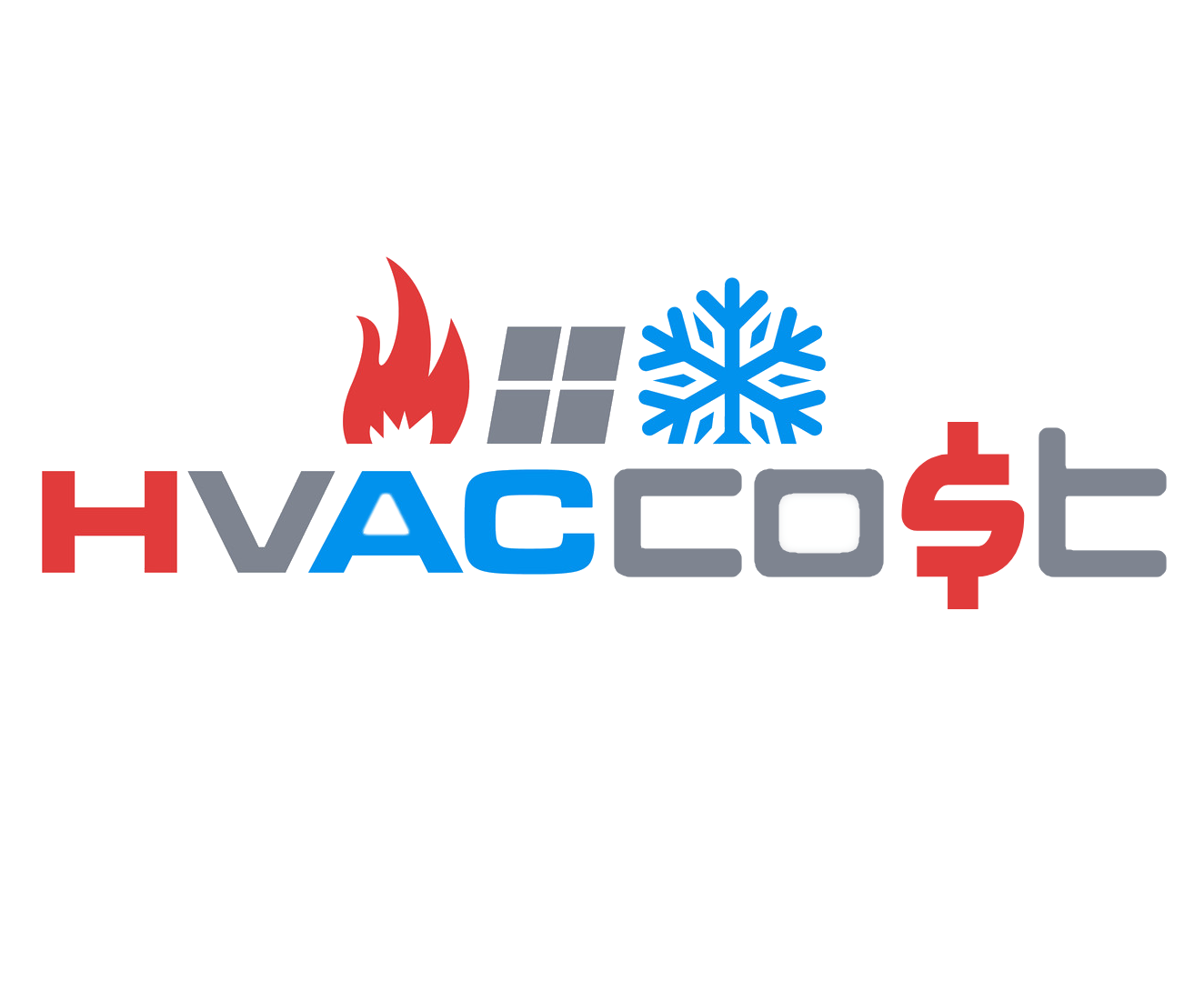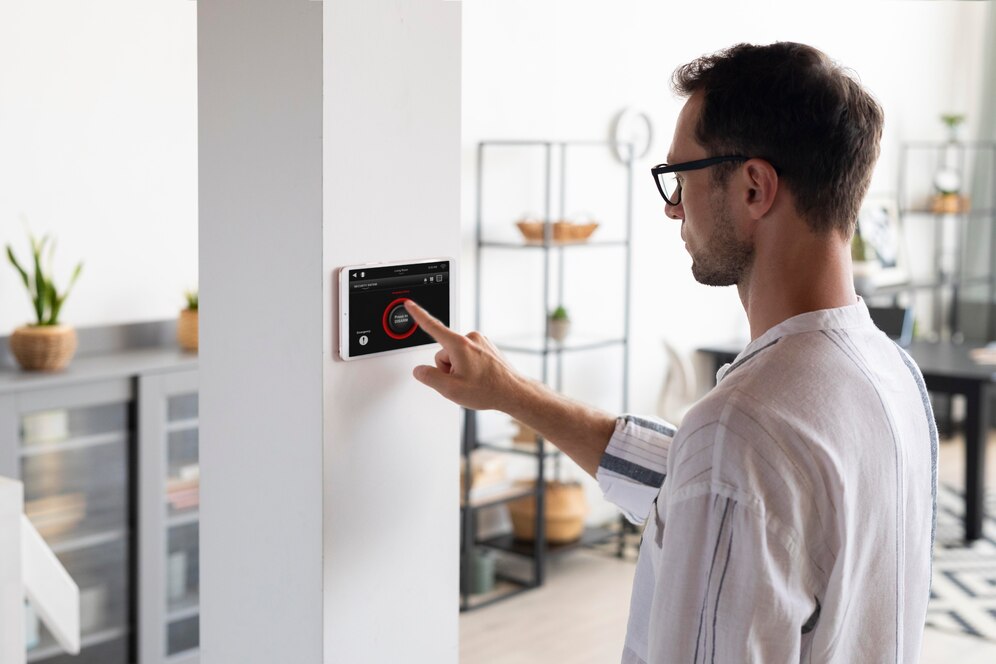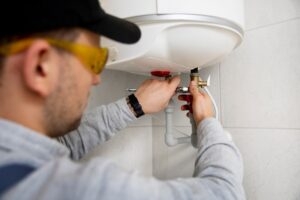Water heaters are more than just appliances; they are essential components of a comfortable home. Providing instant access to hot water for showers, laundry, and cooking, they play a critical role in our daily routines. However, when a water heater starts malfunctioning, it doesn’t just cause inconvenience; it disrupts the rhythm of home life. Among the various issues that can plague these appliances, a tripping thermostat is one of the most common and perplexing. This problem often necessitates a reset procedure and, in more complex scenarios, requires the expertise of a professional. The reasons for a thermostat tripping can range from simple electrical glitches to more severe mechanical failures. Understanding the cause and knowing how to respond effectively can be key in restoring your water heater’s functionality and ensuring your home’s comfort.
Understanding Your Water Heater
Water heaters come in various types, each with unique features and operating mechanisms. The tankless models, known for their efficiency and space-saving design, provide hot water on demand, while traditional storage tank models store and heat water continuously. Regardless of the type, the thermostat is a critical component, responsible for regulating the water temperature within the heater. When it trips, the consequences can be immediate and noticeable, including a lack of hot water, inconsistent water temperatures, or, in extreme cases, dangerously overheating water. Understanding the specific type of your water heater is crucial in troubleshooting thermostat issues effectively, as the approach may vary depending on the model.
Initial Troubleshooting Steps
The first step in addressing any water heater issue is to ensure safety. Turning off the power supply is crucial to prevent electrical hazards. The signs of a thermostat problem can be diverse, from lukewarm water to complete system shutdowns. Early detection of these symptoms can prevent further damage. The initial troubleshooting involves checking for visible signs of malfunction, such as leaks or error codes on digital models. Understanding the basics of your water heater’s operation can be immensely helpful in identifying whether the issue is with the thermostat or another component.
Detailed Guide to Resetting the Thermostat
Resetting the water heater’s thermostat is typically the first response to address the issue. The reset button is usually easily identifiable and located behind the heater’s access panel. This process, though seemingly simple, requires caution and adherence to specific steps to avoid further complications. It’s essential to ensure that the power is off before attempting a reset. Once the reset button is pressed, it’s crucial to monitor the water heater’s performance to confirm that the issue has been resolved. Sometimes, the reset process can be a temporary fix, indicating
a deeper underlying problem. A correctly reset thermostat will result in the immediate restoration of normal water heating functions. However, if the problem persists or recurs, it may signal the need for a more thorough inspection or professional intervention.
Advanced Troubleshooting
If a simple reset does not fix the issue, it could indicate a more serious problem with the thermostat or other components. Advanced troubleshooting steps include using a multimeter to test the thermostat’s functionality. This involves checking for continuity and ensuring that the thermostat is effectively signaling the heating elements to heat the water. Additionally, it’s crucial to inspect other components, like the heating elements and electrical connections, for signs of wear, damage, or malfunction. In cases where the heater is old or has accumulated a significant amount of sediment, these issues can compound, leading to frequent tripping of the thermostat.
When to Call a HVAC Professional
While DIY fixes can be tempting, they come with limitations, especially when dealing with complex electrical appliances like water heaters. Repeated tripping of the thermostat, inability to maintain consistent water temperatures, or signs of electrical issues are indicators that professional help is needed. Certified technicians bring a level of expertise and diagnostic tools that can accurately pinpoint the problem. They can also assess whether the issue is isolated to the thermostat or indicative of a larger systemic problem. Professional intervention ensures safe and effective repairs, adhering to local building codes and manufacturer guidelines, thereby preserving any existing warranties.
Cost Analysis of Professional Troubleshooting
The cost of professional water heater troubleshooting can be influenced by various factors including regional labor rates, the complexity of the repair, the age and model of the water heater, and the urgency of the service required. While DIY repairs can seem cost-effective initially, they might not always be practical or safe, and can sometimes lead to more significant expenses in the long term. The expertise of a professional not only ensures a correct diagnosis but also guarantees a reliable repair. They can also provide valuable advice on maintenance and potential upgrades that could improve efficiency and longevity. The investment in professional services often translates into extended appliance life and improved performance, ultimately proving to be a cost-effective solution. It’s important for homeowners to consider the long-term benefits and safety implications when deciding between DIY and professional repairs. Additionally, homeowners should be aware of the potential for hidden costs in DIY repairs, such as the need for specialized tools or the risk of inadvertently causing further damage.
Detailed Cost Breakdown
The financial aspect of professional water heater troubleshooting encompasses various elements:
- Initial Diagnosis Fees: Professionals typically charge between $50 to $100 for the initial assessment. This fee covers the cost of the technician’s visit and the evaluation of the water heater’s condition. It’s an essential step in identifying the root cause of the issue, and this fee is generally fixed, regardless of the complexity of the problem identified.
- Thermostat Replacement Cost: Replacing a faulty thermostat can range from $100 to $200. This cost includes the price of the new thermostat and the labor involved in installing it. The price may vary depending on the brand and model of the thermostat and the complexity of the installation process.
- Heating Element Issues: If the problem extends beyond the thermostat to the heating elements, addressing these issues can cost between $150 to $250. This includes the cost of new heating elements and the labor required to install them. Heating elements are crucial for the efficient operation of the water heater, and their malfunction can significantly impact performance.
- Labor Costs: Labor charges for water heater repair can vary significantly based on the technician’s expertise, the geographic location, and the complexity of the job. These rates typically fall within $50 to $150 per hour. Labor costs may also include additional charges for extended work hours, especially in complex repair situations.
- Emergency Service Charges: In situations where immediate repair is required, such as in cases of significant water leakage or total loss of hot water, emergency service charges may apply. These charges are typically higher than standard rates and can include after-hours, weekend, or holiday fees.
Comprehensive Cost Analysis for Water Heater Thermostat Troubleshooting
| Service/Component |
Average Cost Range |
Notes/Details |
| Initial Diagnosis Fee |
$50 – $100 |
Assessment of the issue, identifying the cause |
| Thermostat Replacement |
$100 – $200 |
Includes the cost of the thermostat and labor |
| Heating Element Issues |
$150 – $250 |
If the problem extends to heating elements |
| Labor Costs |
$50 – $150 per hour |
Varies based on region and technician’s expertise |
| Emergency Service Charges |
Additional 20% – 50% on total service cost |
For urgent repairs outside standard business hours |
| Comprehensive Repair (including parts and labor) |
$200 – $300 |
In cases where multiple components need repair |
| Travel or Call-out Fee |
$30 – $70 |
Depending on distance and provider |
| Additional Parts (if required) |
Varies |
Costs for any additional parts needed for repair |
| Extended Warranty/Service Plans |
Varies |
Optional; for extended coverage beyond standard warranty |
| Consultation for Upgrades or Replacement |
Free – $100 |
If considering replacing the entire unit |
Maintaining Your Water Heater
Regular maintenance is key to the longevity and efficient operation of your water heater. This includes:
- Periodically checking and testing the thermostat to ensure it functions correctly.
- Inspecting and cleaning heating elements to prevent sediment buildup, which can impair their efficiency.
- Flushing the tank (in storage tank models) to remove sediment, which can lead to overheating and increased wear on the thermostat.
- Checking for leaks or signs of corrosion, which can indicate a need for repair or replacement.
- Ensuring that the area around the water heater is clean and ventilated to prevent overheating and ensure efficient operation.
Proactive maintenance not only prevents sudden malfunctions but also extends the life of the heater and maintains its efficiency.
Legal and Warranty Considerations
When undertaking any form of repair, it’s essential to consider the legal and warranty implications. DIY repairs on a water heater can sometimes void its warranty, especially if the repairs are not carried out according to the manufacturer’s specifications. It’s important to read and understand the warranty terms before attempting any repair. In many cases, manufacturers require that a certified technician perform repairs for the warranty to remain valid. Additionally, local building codes may have specific requirements regarding water heater installation and repair, which must be adhered to for legal compliance and safety.
Environmental Considerations and Energy Efficiency
Well-maintained water heaters not only offer cost benefits but also contribute positively to environmental sustainability. Efficient water heaters use less energy, which reduces the carbon footprint of your household. Regular maintenance ensures that the water heater operates at optimal efficiency, thereby conserving energy and reducing utility bills. Additionally, reducing energy consumption aligns with broader environmental goals, such as reducing greenhouse gas emissions and conserving natural resources.
Conclusion
In conclusion, the effective troubleshooting and maintenance of water heaters are crucial for ensuring their reliable operation and extending their lifespan. Homeowners should weigh the pros and cons of DIY versus professional intervention, considering factors like the complexity of the issue, personal skill level, legal implications, and potential cost savings. Timely intervention, whether through DIY efforts or professional assistance, can prevent minor issues from escalating into major problems. Ultimately, the goal is to maintain a safe, efficient, and reliable water heater that serves your household’s needs while also being mindful of environmental and economic impacts.





